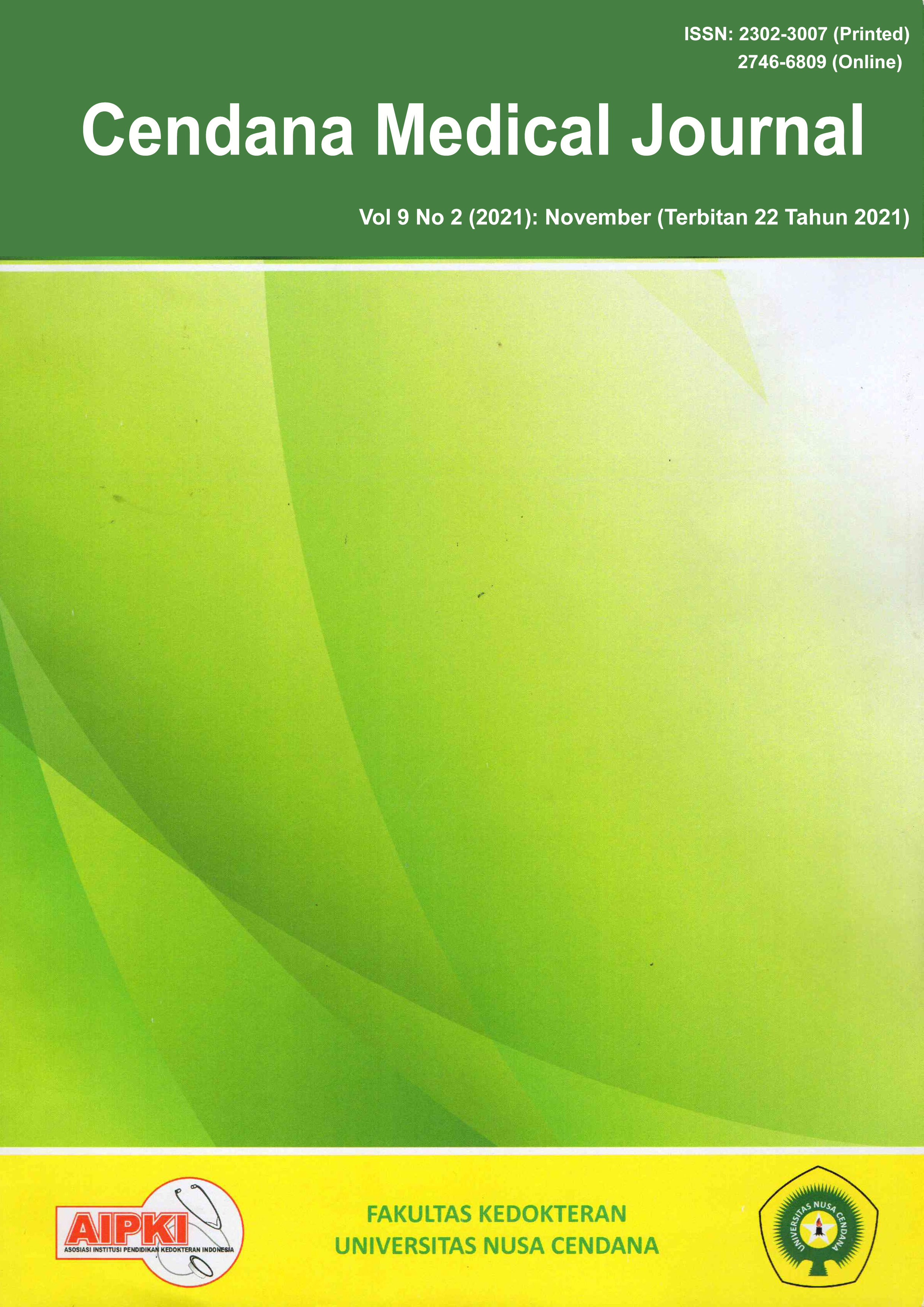Serial Cases Report : 3 Cases Of Giant Bladder Stone In Dilumilpublic Health Center, East Nusa Tenggara, Indonesia
Abstract
Giant bladder stone is a rare case of urinary tract stones. This case usually occurs because of delayed diagnosis due to limited medical facility. Cases Three cases of giant bladder stone were reported in Dilumil Public Health Center, East Nusa Tenggara. All patients are male. The first patient is 40 years old with a 9 x 8.7 x 6 cm bladder stone and that weighed 425 g. The second patient is 19 years old with a 6 x 5.5 x 5.5cm bladder stone and that weighed 116.5g. The third patient is 18 years old with 4.8 x 3.8 x 3.7cm stone and that weighed 105g. Two of three patient’s main complaint was urinary retention, while other patient complained of dysuria. All cases were treated with open vesicolithotomy. Conclusion Giant bladder stone weighing > 100g is uncommon. Initial careful diagnosis is needed to prevent delays in handling bladder stones in primary health facilities. These patients live in the same area and share the drinking water source. The bladder stone was removed by open vesicolithotomy without any complications.
Downloads
References
2. Ma, C., Lu, B., and Sun, E. (2016). Giant bladder stone in a male patient: A case report. Medicine (United States) 95.
3. Tahtalı, İ.N., and Karataş, T. (2014). Giant bladder stone: A case report and review of the literature. Turkish Journal of Urology 40, 189–191.
4. Ofluoglu, Y., Aydin, H. R., Kocaaslan, R., Adanur, S., & Ziypak, T. (2013). A cause of renal dysfunction: A giant bladder stone. Eurasian Journal of Medicine, 45(3), 211–213.
5. Nugroho, E.A., Junita, D., and Wijaya, Y.H. (2019). Giant bladder stone with history of recurrence urinary tract infections: A rare case. Urology Case Reports 26.
6. Halalsheh, O., Sahawneh, F., Altopajee, K., and Almanasra, A. (2017). Single Large Bladder Stone in a Young Male Adult with Primary Hyperparathyroidism. Urology Case Reports 13, 162–164.
7. Widyasmara, H.B., Birowo, P., and Rasyid, N. (2018). Urinary Stone Composition Analysis In Indonesian Population: A Single Major Center Analysis. Indonesian Journal of Urology 25.
8. López, M., and Hoppe, B. (2010). History, epidemiology and regional diversities of urolithiasis. Pediatric Nephrology 25, 49–59.
9. RasmikaDewi, D., &NgurahSubawa, A. (2007). ProfilAnalisis Batu SaluranKencing Di IntalasiLaboratoriumKlinik RSUP Sanglah Denpasar. Journal of Internal Medicine, 8(3).
10. Purnomo B. Basuki.(2012). Dasar-dasarUrologi, EdisiKetiga. Jakarta. SagungSeto.
11. Sulistyawati, Fardhiasih D.A., Ruri T., Asep R. (2016). Well water consumed and urolithiasis in Gedangsari subdistrict, Yogyakarta. National Public Health Journal 11, 26-31.
12. Palinrungi, M.A., Syahrir, S., Kholis, K., Syarif, and Faruk, M. (2020). Giant bladder stone formed around sewing needle in childhood: A case report and literature review. Urology Case Reports 29.
13. Bramono, I.A., Rasyid, N., and Birowo, P. (2015). Associations between BMI, serum uric acid, serum glucose, and blood pressure with urinary tract stone opacity. Medical Journal of Indonesia 24, 103–108.
14. Hammad, F.T., Kaya, M., and Kazim, E. (2006). Bladder calculi: Did the clinical picture change? Urology 67, 1154–1158.
15. Farshi, A., Motlagh, R.S., and Arismani, R.J. (2014). Delivery of huge bladder stone in a thirty-five-year-old man. Nephro-Urology Monthly 6.
16. Amit K., Bindey K., Prem K. (2016). Pediatric Giant Bladder Stone Causing Renal Failure. International Journal of Science and Research (IJSR) 5, 23–25.
17. Singh, K.J., and Kaur, J. (2011). Comparison of three different endoscopic techniques in management of bladder calculi. Indian Journal of Urology 27, 10–13.

Copyright Notice

This work is licensed under a Creative Commons Attribution 4.0 International License.

 Adrianus Gupta Wijaya(1*)
Adrianus Gupta Wijaya(1*)











